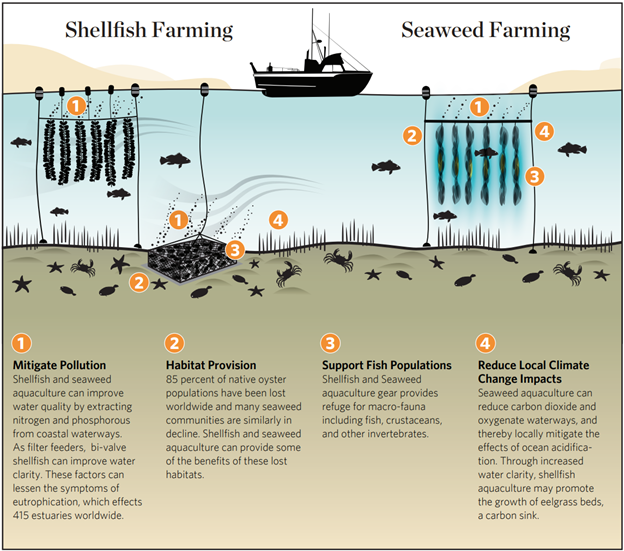Farming & Culture Methods
Many aquaculture farming practices are used worldwide for a variety of marine species. Marine aquaculture mainly includes ponds and cages for fish and substrates for shellfish and seaweed to be secured to, such as stakes, ropes, and rafts. Culture systems range from extensive to intensive depending on the stocking density of the cultured species, the level of inputs, and the degree of management. ref Availability and level of technology, data and science, investment requirements, and environmental conditions are all factors that help farmers determine the best farming methods for their cultured species.
Farming and culture methods can also greatly determine the environmental impact of an aquaculture farm. In restorative aquaculture, species such as seaweed and shellfish are farmed in a way that helps to address water quality degradation, habitat loss, and climate pressures. Choosing farming and culture practices that both maximize yield and have environmental benefits are important considerations for aquaculture practitioners.

Environmental benefits of using restorative aquaculture farming methods. Image © The Nature Conservancy
